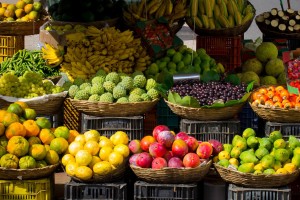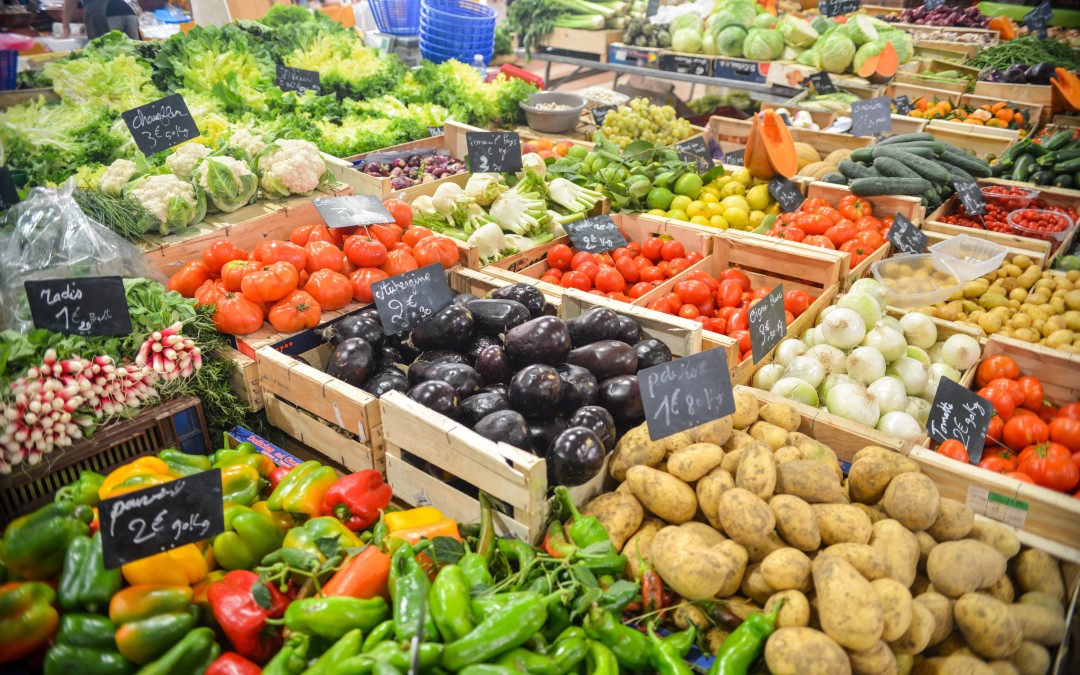By Sally Stone
If you’ve decided to improve how you feel by adopting a whole food diet or been placed on a restricted diet by your doctor or nutritionist, then chances are you’ve been thrown into a whole new meal routine. This new routine may include eating out less, cooking more, and reducing or eliminating packaged foods. Faced with grocery bags full of real food that have to be cooked from scratch can be overwhelming, but it doesn’t have to be. There are many ways to make cooking fun and efficient while creating simple, delicious meals.
I’m on a completely whole food diet, which means I eat foods that are as close to their natural form as possible. I don’t buy or eat any pre-packaged prepared foods. I’m not a gourmet cook by any stretch of the imagination, and I don’t want to spend all my time in the kitchen. But I not only love how I feel when I eat whole foods, I’ve also lost unwanted weight, and learned to love spending time in the kitchen because of it. That’s why I’m sharing these 12 kitchen tips with you.
Enjoy Your Time In The Kitchen

Soups For The Freezer
Kitchen Tip #1. Cook for two or more meals
Dinner is usually the meal we spend the most time preparing. Instead of cooking only for dinner, double the recipe and put your leftovers in the fridge or freezer. These leftovers will be your breakfast or lunch. Simply reheat and enjoy your labors for the second time. To spice up the leftovers, toss in some fresh herbs or create a sauce from ingredients on your food list. If you froze leftovers, such as soup, thaw and eat when you’re just not in the mood to cook.

Fresh Carrot Juice
Kitchen Tip #2. Change your ideas about breakfast
Cereal and milk for breakfast is a modern invention. Why not scallops and asparagus with mushrooms? Or brown rice with kale? Eggs and chard with quinoa? I often drink carrot, celery, cucumber juice for breakfast with a leftover protein from dinner. This meal tides me over until lunch. Change your ideas about what a “typical” meal is and experiment with simple, whole foods on your food list.
Kitchen Tip #3. Use frozen vegetables
Frozen vegetables that are picked at their peak and flash frozen are just as nutritious as fresh vegetables. Using frozen vegetables a few days a week instead of fresh ones can cut your prep and cooking time significantly. Give yourself a break and find some frozen veggies whose taste and texture you like.
Kitchen Tip #4. Clean & store your vegetables
Another way to save prep time on a daily basis is to clean your veggies all at once and store them in containers. I buy 5 pounds of carrots at a time for juicing and cooking, but clean them once. It takes about 15 minutes to cut off the stems, soak, brush, and rinse the carrots. Then I let them air dry while I do something else. I store them in large, BPA-free, plastic containers. Think about which vegetables you buy that could be cleaned and stored like this to save daily prep time.

Kitchen Tip #5. Mix it up
To add variety in texture to your meal, toss it in the blender or vitamix. Steamed cauliflower makes a creamy, blended soup. Lima beans make a creamy topping or soup. Frozen bananas make a sweet, creamy dessert.
Kitchen Tip #6. Spice it up
If you’re coming off pre-packaged foods or restaurant meals, your taste buds will need time to regain their sensitivity to the subtle flavors of real foods. In the meantime, to spice up your meals, add gentle herbs. Fresh herbs pack more flavor than dried ones, but don’t fret if you can’t find fresh ones. The dried ones work, too. They just need a little more simmering to draw the flavors out. When your taste buds wake up, you can adjust your herbs accordingly.
Kitchen Tip #7. Rotate your foods
Rotating foods is considered to be an important practice for avoiding the development of food sensitivities. This means eating different foods everyday for three days, then starting over. Think of a day as dinner, breakfast, and lunch. If you eat cauliflower for dinner on Sunday, then again for lunch on Monday, eat other foods on Tuesday and Wednesday, and then cauliflower again on Thursday. This will also ensure variety in your diet.
Kitchen Tip #8. Cook protein, grains, and potatoes first
This is a basic you’ve probably already figured out, but if you haven’t, always start cooking the food first that needs to be cooked the longest. This means preparing your rice, potatoes, artichokes, meat, poultry, or fish first. Once that’s on the stove, you can prep your vegetables and begin steaming/sautéing, which are the two simplest ways to cook vegetables. All these foods store well, so make enough for a couple of days.
Kitchen Tip #9. Buy easy to eat snacks
Depending on your food list, there are many types of snacks that are fast nourishing. If dairy is on your list, then plain yogurt is a good choice. If nuts and seeds are on your list, then keep your favorites on hand. Approved fruits, like bananas and apples are handy, as are cherry tomatoes, carrots, celery, red pepper strips, and cucumber slices. Even a can of wild caught sardines is simple to pop open and tide you over until your next meal. It’s also high in omega-3 fatty acids.
Kitchen Tip #10. Listen to music while you cook
Instead of approaching cooking as a stressful task, think of it as your time to relax. Bring your computer, phone, or radio into the kitchen and tune into some music or a radio show you find relaxing or upbeat.
Kitchen Tip #11. Occupy your mind with positive thoughts
As you cook, occupy your mind with positive thoughts. One in nine people throughout the world don’t have access to running water – that’s 780 million people. If you’re in a kitchen, standing at the sink with running water, you’re one of the lucky ones. Enjoy the water as it runs over your hands, cleans your food, washes your dishes, and hydrates your body. As many problems as we may have, we can find something, anything, to be grateful about. A sense of appreciation is a powerful and free means of shifting anxiety and stress toward a sense of wellbeing.
And At The Table
Kitchen Tip #12. Make your meal an offering
Cooking is an art form that gets eaten, cleaned up, and forgotten. A meal is a bit like making a Tibetan sand mandala — beautiful, intricate sand art that eventually gets blown away in the wind. The Tibetan monks make these mandalas as a reminder of the beauty and impermanence of reality. These mandalas are meant to generate compassion and healing. Place your meal on the plate in a way that looks beautiful to you. As you chew well (until it’s soft and soupy), taste every bite. See how many flavors burst open into your mouth as you eat. When you swallow, imagine how that nutrition going through your digestive tract, feeding your body, and making you strong and healthy. Give thanks for your food and your body’s ability to digest and assimilate it.
Changing the way you eat may be a big lifestyle change that takes adjustment. But the results are worth it. Notice how you feel day by day as you take control of what you eat and count your blessings along the way. What felt like a disruption at first, may turn into your next blessing.
Sources:
http://www.webmd.com/food-recipes/the-whole-foods-diet
http://www.webmd.com/food-recipes/frozen-vegetables-are-hot
http://www.gomang.org/mandala.html
http://water.org/water-crisis/water-facts/water/
https://www.heartmath.org/articles-of-the-heart/personal-development/an-appreciative-heart-is-good-medicine/
Please note: This information is not meant to replace medical and menu advice from your physician, nutritionist, or dietician.
For support with your goals for healthy living, email to schedule a complimentary phone consultation.






